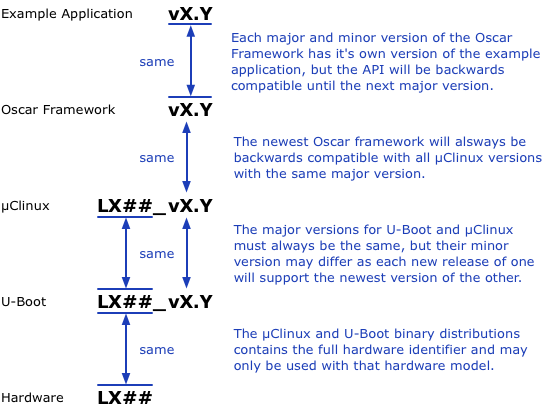Versioning Schemes
This page describes the versioning scheme for software packages and hardware elements.

Out source and binary distributions of uClinux, U-Boot, the source distributions of the Oscar framework and example applications are all identified by a major, minor and optionally a patch number. Versions without a patch number are of the form:
"v" <major> "." <minor>
And Versions with a patch number are of the form:
"v" <major> "." <minor> "-p" <patch>
Examples of these are:
v1.0 v1.1-p3
Patch releases denoted by patch numbers never break compatibility. That is, if a given component of a given major and minor version are labelled as supported, this is automatically meant to be true for all patch releases with the same major and minor version number.
Hardware versions are called platforms and are included in the version string of binary software releases as they depend on a particular hardware platform. The hardware platform string is composed as follows:
<product-line> <pcb-version> <assembly-mode>
Different values for product-line denote different hardware architectures and are mostly unrelated. "LX" stands for the leanXcam. Different values for pcb-version denote different major versions of he printed circuit board. A new version may add orr remove complete features and so makes it incompatible to other major versions. Different values for assemply-mode denote different modes in which the board may be assembled. This includes which devices are mounted in a particular camera. An example for the leanXcam with the original board and default assembly configuration would be:
LX1A